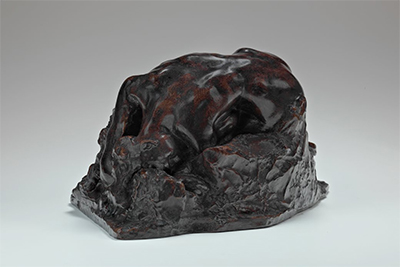The Danaid is one of the finest sculptures modelled by the most outstanding sculptor in the 19th century, Auguste Rodin. The famous French sculptor initially began work on this marble model in 1885 which was originally designed as part of the monumental Gates Of Hell a bronze door which stands at 6 metres high and 4 metres wide at the Museum of Decorative Arts in Paris, France.
However, the model was eventually left out of the final design. Rodin's artwork was inspired by ancient Greek mythology, the story of the daughters of Danaus, son of the King of Egypt, known as Danaides. Danaus had 50 daughters while his brother Aegyptus had 50 sons. A conflict arose between the two brothers and Danaus and his fifty daughters fled to Argos where the sons of Aegyptus pursued them. In order for Danaides to remain safe as refugees in Argos, they had to marry the sons of Aegyptus without their consent causing their father to order them to kill their husbands by stabbing them as they slept on their wedding night.
Forty-nine of the daughters conformed to this order while Hypermenstra defied and spared her forced husband, Lynceus. As punishment for their felonies, the forty-nine Danaides were banished in Hades and given a fruitless task of filling up porous jars with water for eternity. In Rodin's model, he depicts one of the Danaides in utter desolation laying on the ground with the water vessel by her side as her smooth and long hair falls over the rock. Whilst portraying the despair and exhaustion from the bizarre assignment, the model also shows the beauty of the human figure from the beautifully flowing hair to the smooth curve of her back.
The first exhibition of this marble was in 1889, the Monet - Rodin exhibition at Georges Petit Galerie where it received immense recognition. As a result of the triumphant exhibition, Rodin charged Jean Escoula to create the second marble of Danaide. This edition was bought by the French government and is currently kept at the Musée Rodin collection in Paris. Besides this marble model, Rodin has other sculptures made of bronze such as the Bust of Victor Hugo (1883), The Walking Man (1900-1907), The Thinker (1881) and Monument To Balzac (1898).




